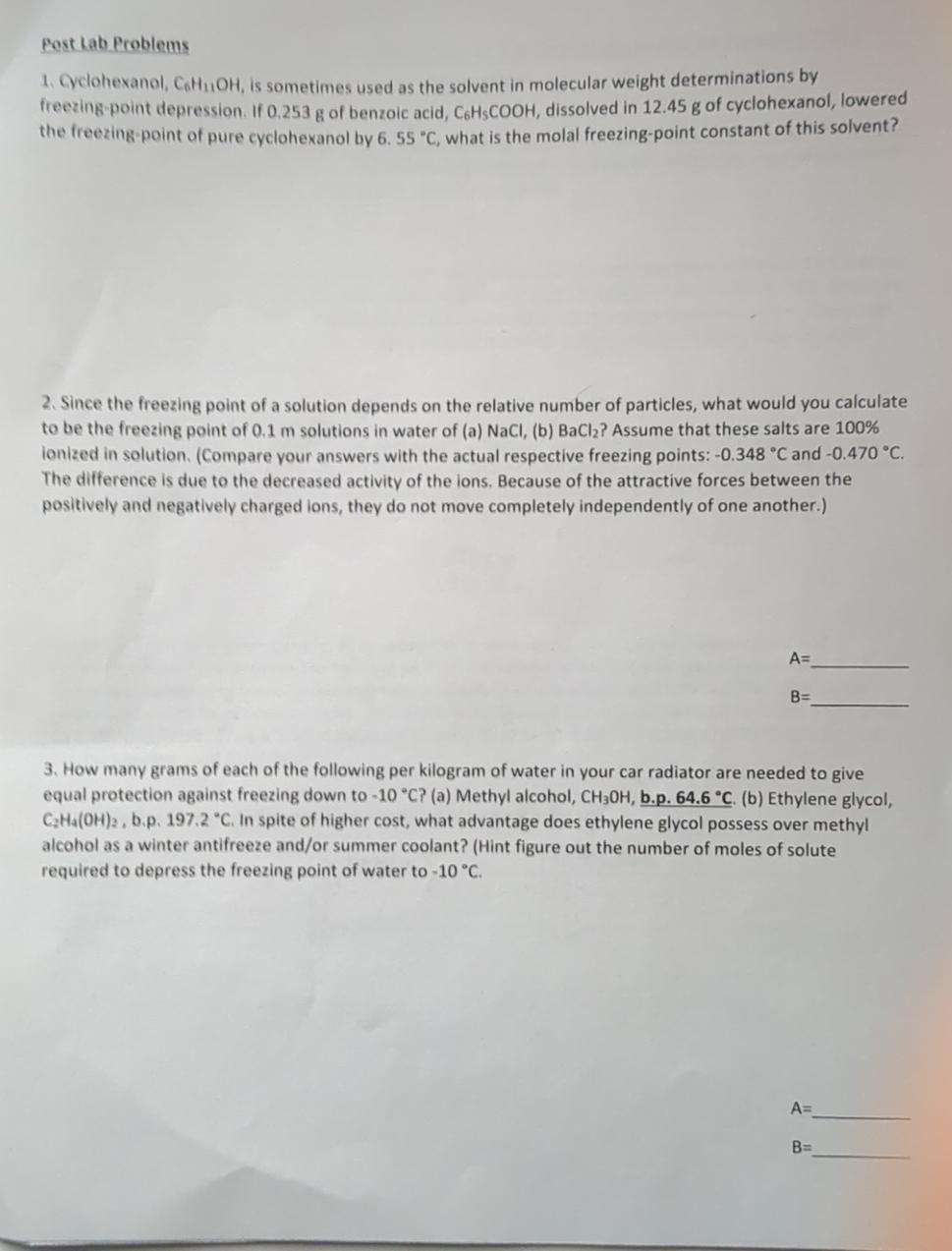Answered step by step
Verified Expert Solution
Question
1 Approved Answer
Post Lab Problems Gyclohexanol, C 6 H 1 1 O H , is sometimes used as the solvent in molecular weight determinations by freezing -
Post Lab Problems
Gyclohexanol, is sometimes used as the solvent in molecular weight determinations by freezingpoint depression. If of benzoic acid, dissolved in of cyclohexanol, lowered the freezingpoint of pure cyclohexanol by what is the molal freezingpoint constant of this solvent?
Since the freezing point of a solution depends on the relative number of particles, what would you calculate to be the freezing point of solutions in water of a NaCl, b Assume that these salts are Ionized in solution. Compare your answers with the actual respective freezing points: and The difference is due to the decreased activity of the ions. Because of the attractive forces between the positively and negatively charged ions, they do not move completely independently of one another.
How many grams of each of the following per kilogram of water in your car radiator are needed to give equal protection against freezing down to a Methyl alcohol, bpb Ethylene glycol, bp In spite of higher cost, what advantage does ethylene glycol possess over methyl alcohol as a winter antifreeze andor summer coolant? Hint figure out the number of moles of solute required to depress the freezing point of water to

Step by Step Solution
There are 3 Steps involved in it
Step: 1

Get Instant Access to Expert-Tailored Solutions
See step-by-step solutions with expert insights and AI powered tools for academic success
Step: 2

Step: 3

Ace Your Homework with AI
Get the answers you need in no time with our AI-driven, step-by-step assistance
Get Started


